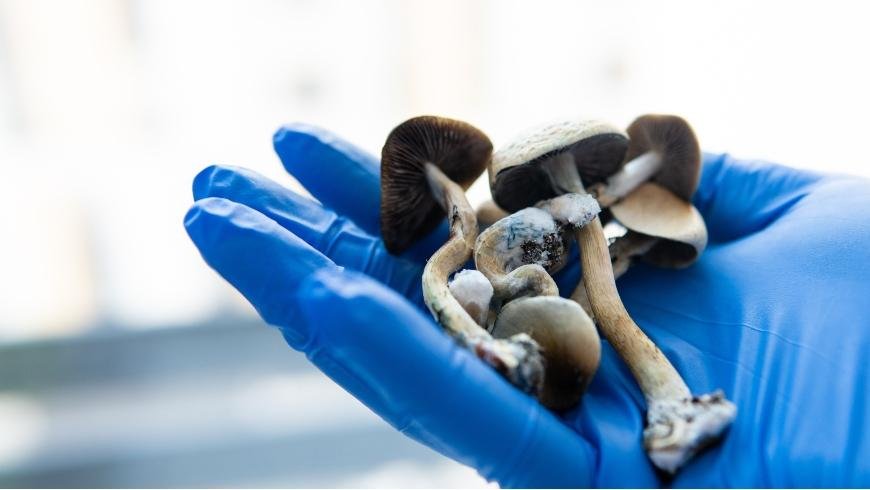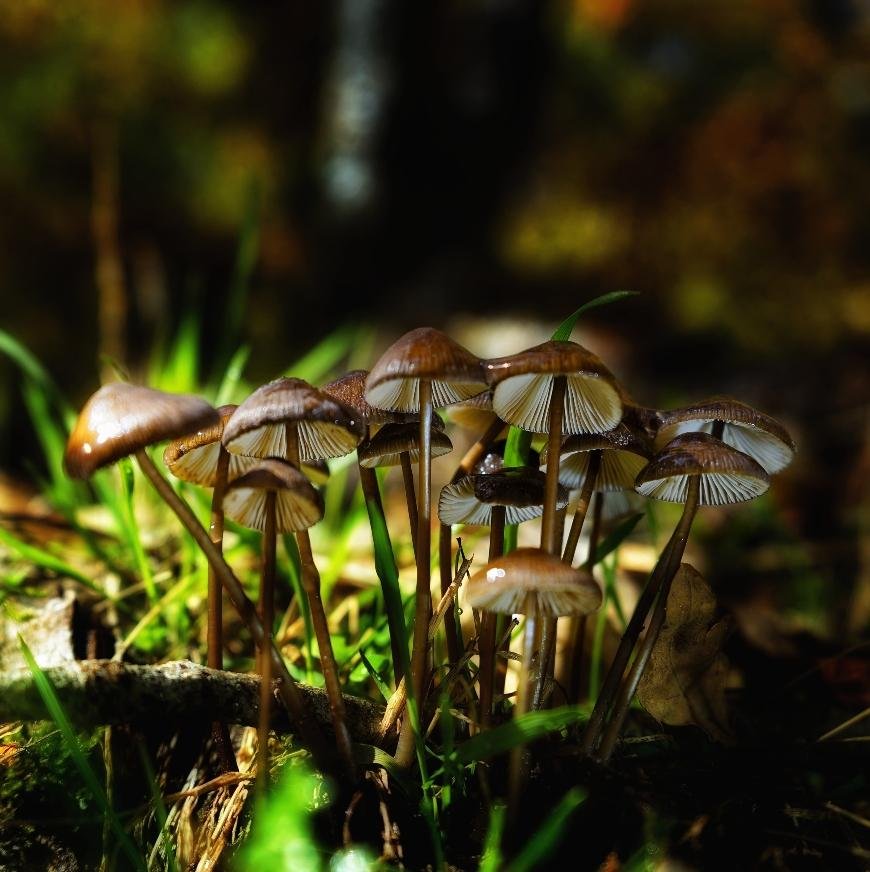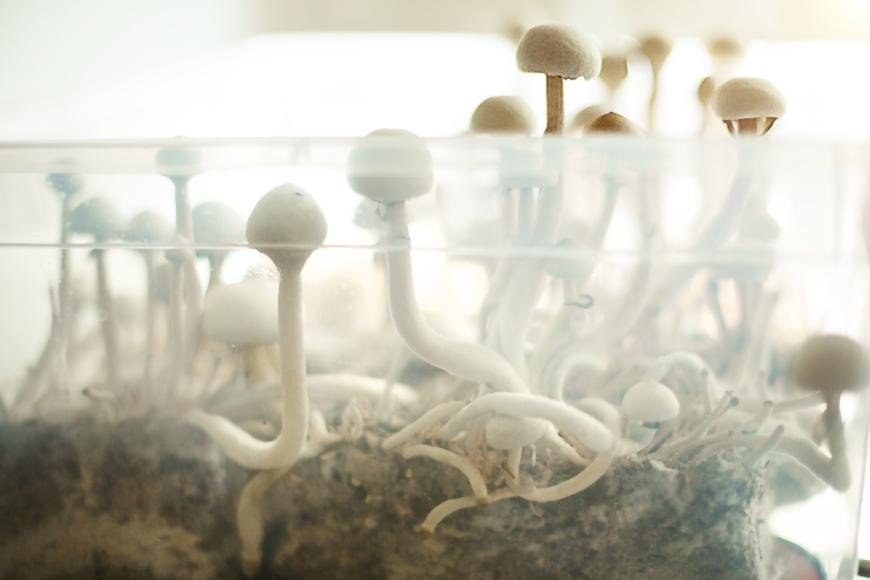How Long Does It Take to Grow Magic Mushrooms?
Learn how long it takes to grow magic mushrooms and the easiest types of strains available. Get tips on harvesting & drying your homegrown crops in this comprehensive guide!

Magic mushrooms have been used for centuries as a powerful tool of healing, creativity and exploration. What is the duration required for cultivating magic mushrooms? Growing your own magic mushroom crop can be an exciting experience that allows you to explore the depths of psychedelic experiences without having to buy them from outside sources. In this blog post, we'll delve into the details of magic mushrooms - from growing them at home to harvesting and drying your crop - as well as how long it takes for cultivation. We'll also cover the easiest types of strains available, common problems when growing at home and harvesting & drying your homegrown crops. So if you're curious about cultivating your own magical fungi in the comfort of your own space - read on.
Table of Contents:
- What are Magic Mushrooms?
- How to Grow Magic Mushrooms
- How Long Does it Take to Grow Magic Mushrooms?
- Easiest Types of Magic Mushroom Strains to Grow at Home
- Common Problems When Growing Magic Mushrooms at Home
- Harvesting and Drying Your Home-Grown Magic Mushroom Crop
- Conclusion
What are Magic Mushrooms?
Shrooms, a kind of fungus with psychoactive compounds, are known as magic mushrooms. They have been used for centuries by various cultures in spiritual and religious ceremonies. Magic mushrooms can be found growing wild or cultivated in many parts of the world, including North America, Europe, Asia, Australia and South Africa.
Types of Magic Mushrooms:
There are over 180 species of magic mushrooms that contain psilocybin and psilocin – two naturally occurring hallucinogenic compounds. The most common types include Psilocybe cubensis (also known as “golden tops”), Panaeolus cyanescens (also known as “blue meanies”) and Copelandia cyanescens (also known as “Hawaiian”). All three types produce similar effects when consumed.
When ingested orally, magic mushrooms can produce psychedelic effects within 30 minutes to an hour. The dosage and individual tolerance can affect the duration of effects, which may range from 30 minutes to six hours. Visual distortions such as colour changes or trails behind moving objects, auditory hallucinations, feelings of euphoria, altered perception of time, increased energy levels and creativity are commonly reported experiences. Additionally, heightened awareness and insight into personal issues, along with an altered body image sensation (feeling lighter than air or heavier than usual) and intense emotions like joy or fear, may be experienced. Keywords: Psychedelic Effects; Dosage Taken; Individual Tolerance Levels; Visual Distortions; Auditory Hallucinations; Feelings of Euphoria; Altered Perception of Time; Increased Energy Levels & Creativity; Heightened Awareness & Insight Into Personal Issues; Altered Body Image Sensation; Intense Emotions
In the US, magic mushrooms are categorized as Schedule I drugs with no recognized medical applications. However, research is being conducted on their potential therapeutic benefits. In many places, owning magic mushrooms is prohibited because of their capacity to induce hallucinations; yet some jurisdictions have decriminalized them for private use only, and others permit it with certain restrictions in a medical context.
Magic mushrooms are an intriguing and powerful psychedelic that can have profound effects on the user. With the right know-how, cultivating magic mushrooms in one's own home is a relatively straightforward process that requires only minimal resources.

How to Grow Magic Mushrooms
Growing magic mushrooms is a rewarding experience that can provide you with a steady supply of psychedelic fungi. To get started, there are several supplies needed to grow your own crop of shrooms. The most important items are mushroom spores or culture, an appropriate substrate (such as manure or compost), and containers for the growing process. Additionally, you’ll need some form of humidity control, such as perlite or vermiculite, in order to maintain optimal moisture levels for your mushrooms.
Once you have all the necessary supplies ready, it’s time to begin the steps for growing magic mushrooms. Start by sterilizing the substrate and inoculating it with mushroom spores or culture using either liquid culture syringes or spore prints on agar plates. Then place your inoculated substrate into containers and cover them with lids containing holes for air exchange. Finally, incubate these containers in temperatures between 70-80°F while maintaining high humidity levels (90-100%).
In addition to following these steps correctly, there are also several tips that will help ensure successful growth when cultivating magic mushrooms at home. Firstly, it is imperative to guarantee that all items utilized in the cycle are spotless and sterile; this incorporates any instruments, for example, blades and scissors. Secondly, the temperature must be monitored closely; too low temperatures can cause slow growth, while too high can kill off mycelium colonies completely. Lastly—and perhaps most importantly—it is necessary to maintain proper humidity levels throughout the entire cultivation process; this means misting regularly with water whenever needed.
Raising shrooms can be an enriching and delightful undertaking, yet it necessitates tolerance and exactness. With the right knowledge and supplies, you'll soon have your own homegrown crop of magical fungi. Now let's take a look at how long it takes for these mushrooms to grow.
How Long Does it Take to Grow Magic Mushrooms?
The time it takes to grow magic mushrooms varies depending on the strain, environment, and other factors. The most important factor in determining growth time is the strain of mushrooms being grown. Various strains necessitate varying conditions for their best growth and have diverse rates of development. Generally speaking, Psilocybe cubensis strains are some of the fastest-growing varieties, while Panaeolus cyanescens and Copelandia cyanescens tend to take a bit longer.
Aside from the kind of mushroom cultivated, external conditions can also have an effect on its maturity timeline. Temperature is especially important; too high or too low temperatures can stunt or even kill your crop. For optimum mushroom growth, temperatures between 65°F (18°C) and 75°F (24°C), along with humidity levels of 70%-90%, should be maintained. Humidity levels should be kept between 70%-90% throughout the entire growing process as well. Poor air circulation can also cause issues with fungus development, so make sure you have adequate ventilation if you’re growing indoors.
If you want to speed up your magic mushroom cultivation process, there are several methods that may help accelerate things a bit. One way is by using pre-sterilized substrates such as brown rice flour, which already contains all the necessary nutrients needed for fungi growth, without having to worry about contamination from outside sources like bacteria or mould spores which could otherwise slow down your harvest significantly. You can also use higher-quality spawn bags instead of jars when inoculating with spore syringes; these will allow more oxygen into the substrate allowing mycelium colonies to form much faster than traditional glass jar setups would normally allow. Finally, adding supplemental light sources such as LED lights during colonization phases will increase photosynthesis rates resulting in faster overall growth times compared to keeping them in total darkness until fruiting begins.
Growth time for magic mushrooms can vary greatly depending on the strain, environmental conditions, and other factors. To ensure the successful cultivation of these fungi at home, it is important to understand which types are easiest to grow.
Easiest Types of Magic Mushroom Strains to Grow at Home
For the novice cultivator, Psilocybe cubensis, Panaeolus cyanescens and Copelandia cyanescens are the most accessible strains of magic mushrooms to grow. Each type has its own unique characteristics and growth requirements, which can make them easier or more difficult to grow depending on your experience level.
Psilocybe Cubensis Strains are one of the most popular mushroom varieties for beginner growers due to their hardiness and easy-to-follow cultivation instructions. These mushrooms typically require a warm temperature range between 70-80 degrees Fahrenheit with high humidity levels in order to thrive. Additionally, they prefer an environment with plenty of light exposure but not direct sunlight, as this can cause the mushrooms to dry out too quickly. When grown properly, these mushrooms will produce large fruits with thick stems and caps that may be yellowish or white in colour.
Panaeolus Cyanescens Strains are another type of magic mushroom strain that is relatively easy for beginners to cultivate at home. This species prefers warmer temperatures ranging from 75-85 degrees Fahrenheit along with higher humidity levels than other strains like Psilocybe cubensis, so special care must be taken when cultivating them indoors. In addition, they require lots of fresh air exchange as well as indirect lighting during fruiting periods in order for optimal growth conditions; however, they do not tolerate direct sunlight very well either, so shade should always be provided when possible. Once established correctly, these mushrooms will produce small dark brown or black coloured fruits with thin stems and caps that have a distinct bluish hue when bruised or handled roughly enough times over time - making them easily identifiable even by novice cultivators.
Copelandia Cyanescens Strains, also known as “blue meanies” due to their distinct blue hues, which appear when handled roughly enough times over time, prefer cooler temperatures between 65-75 degrees Fahrenheit for optimal growth conditions. This makes them ideal for those living in cooler climates who want an easier strain to work with. They require plenty of fresh air exchange along with indirect lighting during fruiting periods and don't need quite as much humidity since they tend not to take up moisture faster than other species do. With proper care and maintenance, copelandia cyanscens can produce abundant yields - making it a great choice among beginner growers looking for an easier variety that doesn't require too much effort yet still produces impressive results.
Knowing the various varieties of magic mushrooms and which are best for your aims is critical when cultivating them in a home setting. To ensure a successful harvest, one must also be aware of common problems that may arise when cultivating these fungi, such as contamination issues or poor temperature and humidity levels.
Common Problems When Growing Magic Mushrooms at Home
Raising magic mushrooms in the residence can be a thrilling and gratifying experience, yet it also comes with its own set of difficulties. Contamination issues are one of the most common problems encountered when growing these psychedelic fungi. If the substrate or environment in which you’re growing your mushrooms isn’t properly sterilized, they can become contaminated with unwanted bacteria or mould that will ruin your crop. Poor temperature and humidity levels can also cause problems for mushroom growers as they need to remain consistent in order to ensure proper growth. Additionally, if there are not enough nutrients available in the substrate, then this too can lead to stunted growth or even death of the mycelium before it has a chance to fruit into mushrooms.
Contamination is perhaps one of the biggest threats when attempting to grow magic mushrooms at home as any foreign organism that makes its way into your setup could have disastrous results. It is important to use sterile techniques such as pressure cooking your substrate and using only distilled water during preparation stages so that no contaminants make their way into your system. Additionally, always wear gloves while handling materials related to mushroom cultivation and never touch anything directly with bare hands, as this increases the risk of contamination significantly.
Temperature and humidity levels should also be closely monitored throughout all stages of mushroom cultivation as both need to stay within specific ranges for successful fruiting bodies formation (typically between 70-80°F [21-27°C] & 75-85% relative humidity). Too much moisture will increase chances for bacterial contamination, whereas too little will stunt growth completely; therefore, maintaining ideal conditions is essential for success when cultivating magic mushrooms at home.
It is critical to be cognizant of potential difficulties such as contamination, inadequate humidity and temperature regulation, and deficient nutrient supply when cultivating magic mushrooms in the home. With proper preparation, however, harvesting and drying your crop can yield great results.
Harvesting and Drying Your Home-Grown Magic Mushroom Crop
Harvesting your home-grown magic mushroom crop is an important step in the cultivation process. Figuring out when to collect the fungi and how to properly preserve them is essential for maximizing your mushroom yield.
Reaping must be performed with perfect timing. Magic mushrooms should be harvested just before their caps open fully, as this is when they are at their peak potency. It’s best to check on them daily, so you don’t miss this crucial window of opportunity for harvesting. Once harvested, the mushrooms must be dried quickly and stored correctly in order to preserve their potency and freshness.
The most effective way to dry magic mushrooms is with a food dehydrator set at a low temperature (no higher than 95°F). This helps preserve all of the beneficial compounds found within the mushroom while also reducing any potential risk of contamination or spoilage due to high temperatures or humidity levels. Alternatively, you can use an oven set on its lowest setting with the door slightly open for ventilation; however, this method tends not to take as long as using a food dehydrator does and may result in some loss of potency over time if not done correctly.
Once dried completely (which usually takes between 8-12 hours), store your mushrooms in airtight containers such as glass jars or zip-lock bags away from direct sunlight or heat sources like radiators or hot water pipes, which could cause further degradation over time. You can also add silica gel packets into each container which will help absorb any excess moisture that may still remain after drying has been completed – just make sure these packets aren’t ingested.
By following these simple steps for harvesting, drying, and storing your home-grown magic mushroom crop properly, you can enjoy them for months down the line without worrying about losing quality or risking contamination due to improper storage methods. This includes ensuring that they are harvested just before their caps open fully, dried quickly using a food dehydrator set at a low temperature (no higher than 95°F), and stored in airtight containers away from direct sunlight or heat sources like radiators or hot water pipes. Additionally, adding silica gel packets into each container will help absorb any excess moisture that may still remain after drying has been completed – just make sure these packets aren’t ingested.
Harvesting and drying your home-grown magic mushroom crop is an important step in the process of cultivating these psychedelic substances. With a few simple steps, you can ensure that your crop will be safely stored for consumption. Next, we'll discuss the benefits and safety considerations when handling and consuming psychedelics, as well as resources for further information.

Conclusion
With the correct tools, understanding, and perseverance, it can be accomplished in as little as two weeks. While there are many common problems that may arise during cultivation, these issues can usually be avoided with proper preparation. Most mushroom strains can be cultivated in two to four weeks with the correct equipment, knowledge and dedication. By following this guide, you should have no problem growing your own crop of delicious shrooms.






































































































































